Birding the Bay Islands: The crazy chaos of nesting season on Alcatraz
By Helen Doyle (All Photos and Story)
Alcatraz Island is quieting down as another nesting season wraps up. The Peregrine falcon and Western gull chicks have fledged, the Brandt’s Cormorant chicks are as big as their parents, the Snowy Egrets and Pigeon Guillemots are mostly gone. Another generation flies the coop. Just what makes this rocky island such a fabulous nesting location?
My interest in Alcatraz’s unique seasonal bird population was piqued when I had the opportunity to visit frequently as a volunteer with the Alcatraz Historic Gardens program. More of a plant person than a birder, I’m intrigued by different habitats and the wildlife they support (hence, my interest in writing the Birding the Bay Islands series: Bair, Angel, and Mare).
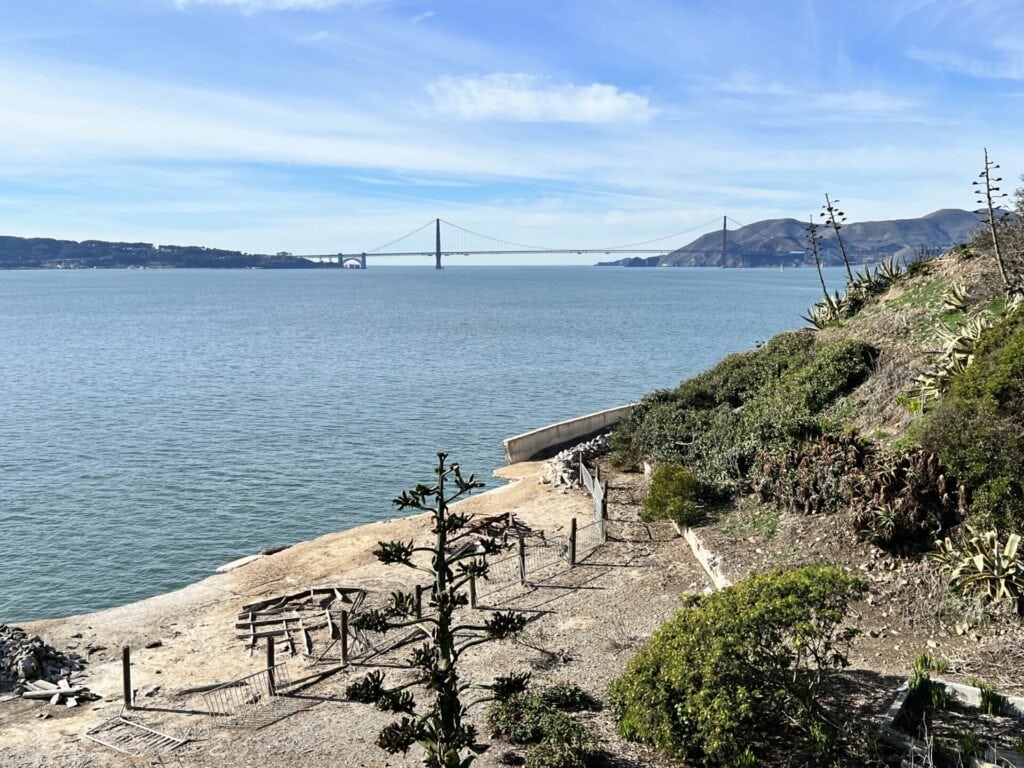
Less than two miles from San Francisco, Alcatraz Island offers 22-acres of critical nesting habitat for many shore and water birds. It’s noisy and smelly and fascinating.
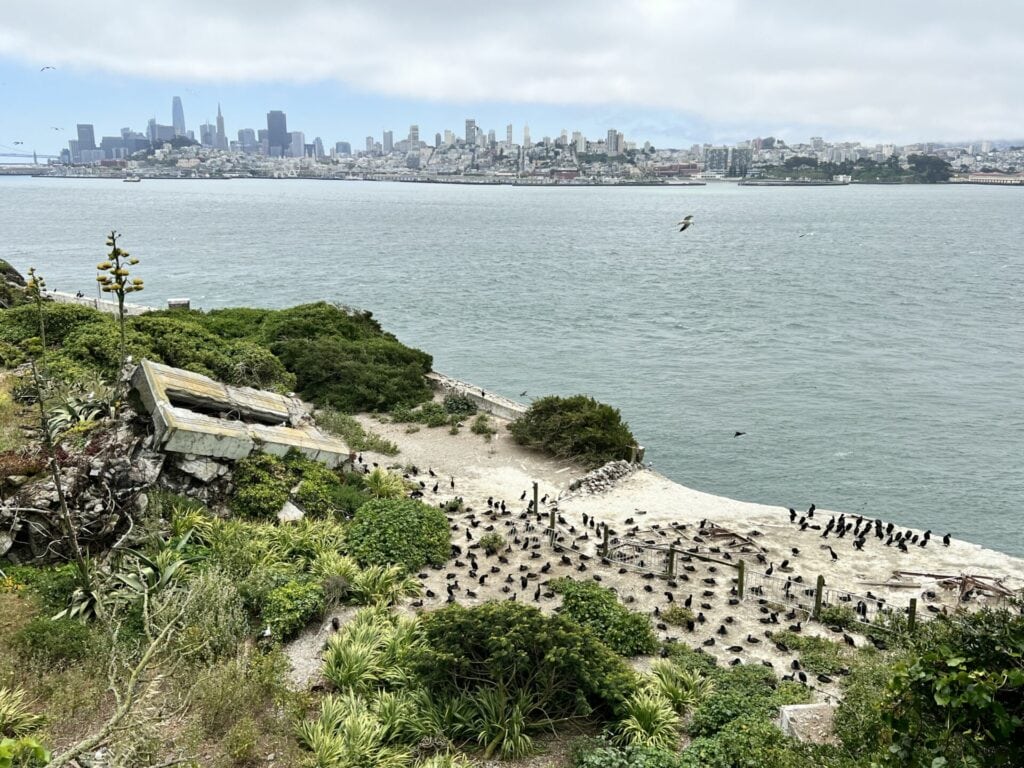
The human history of Alcatraz is a multi-layered, mostly painful story. While there’s no evidence that the Ramaytush Ohlone and other indigenous people of the Bay Area had settlements on the island, they may have visited the island to harvest eggs and birds for food, to conduct ceremonies, and to isolate/ostracize members of their tribes who violated tribal law. It should also be noted that indigenous people used the island as a refuge from the oppresive California Mission system, and once the island became a prison, many Native Americans were incarcerated for resisting the allotment of tribal lands and refusing to send their children to boarding schools. We don’t know what the local indigenous people called the island prior to colonization by the Spanish. Juan Manuel de Ayala named it Isla de los Alcatraces (“Isle of the Pelicans”) in 1775, recognizing its abundant bird population. Alcatraz had the first lighthouse on the Pacific coast (built in 1854), was an important military base during the Civil War, became a military prison, and finally was a brutal federal prison from 1933 to 1963. From 1969 to 1971, local Native Americans and members of the American Indian Movement took over the island as part of the nationwide activism around indigenous rights and sovereignty (see We Hold the Rock for more about indigenous history and occupation).

This occupation is best memorialized by graffiti prominently displayed–and recently restored to honor the 50th anniversary of the occupation–on the buildings near the dock and on the water tower. Now Alcatraz is run by the National Park Service and attracts tourists from all over the world.
As for the birds, why is there such abundant nesting here and not on other islands in the Bay?
Alcatraz is not particularly habitable for humans and other mammals. The island has no native flora and no consistent freshwater source. Before the lighthouse and military prison were built in the mid-1800s, the island was a barren, guano-encrusted rock. All the soil and plants you’ll find on Alcatraz today were brought to the island by people. Most critical for birds, Alcatraz has almost no mammals or reptiles that prey on eggs and chicks in other terrestrial habitats. No rats, raccoons, coyotes, cats, possums, or other dangers found on other islands. Of course, there are raptors that will take some eggs or chicks. But for the most part Alcatraz is a nesting birds’ dream. Along with safe egg-laying and chick-rearing real estate, there’s abundant organic matter and rubble for nest building and plenty of food just a short flight away in the bay and ocean.

On a walk around the island in June 2023, Lidia D’Amico, then a National Park Service Interpreter, pointed out the Western Gulls and Brandt’s Cormorants nesting throughout the Alcatraz’s Parade Ground, which is blocked off to visitors during nesting season. She explained that the Brandt’s Ccormorants love the flat cement rubble of the Parade Ground. They counted 3,900 nests in 2023, an increase first noticed in 2020 that has now almost doubled their historic numbers. This increase likely reflected a change in their food source and their past success reproducing on the island. This summer, though, a volunteer docent told me that the number of nesting Brandt’s Ccormorants was significantly lower, around 2,500, and more birds without nests seemed to be hanging around. Again, this likely reflects natural variation in their food sources and is nothing to worry about, according to the birders who monitor the island’s bird populations.
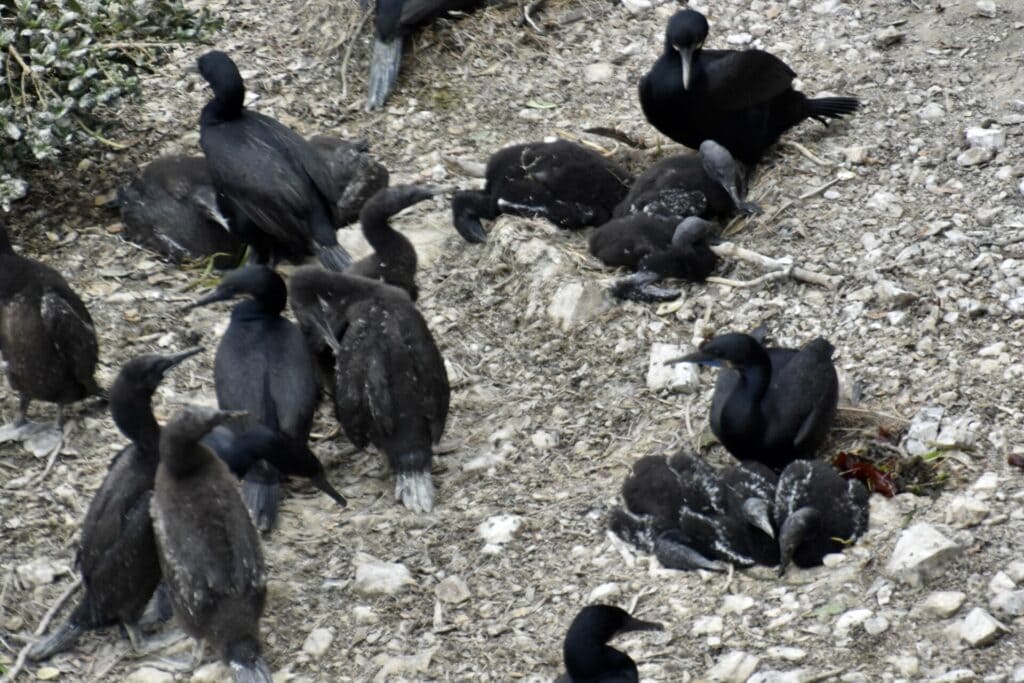
While cormorants may have outcompeted the gulls for space on the Parade Ground the past few years, the gulls found places to nest all over the island: atop old walls, in the fireplace of a burned out building, in corners of the historic gardens. The gull parents squawk loudly at any person or bird who gets too close to their chicks, and will attack chicks that are not their own if they wander into the wrong nest. Gardening volunteers learn to give ample space to the new chicks and their protective parents, leaving some areas of the historic gardens untended for a few months.
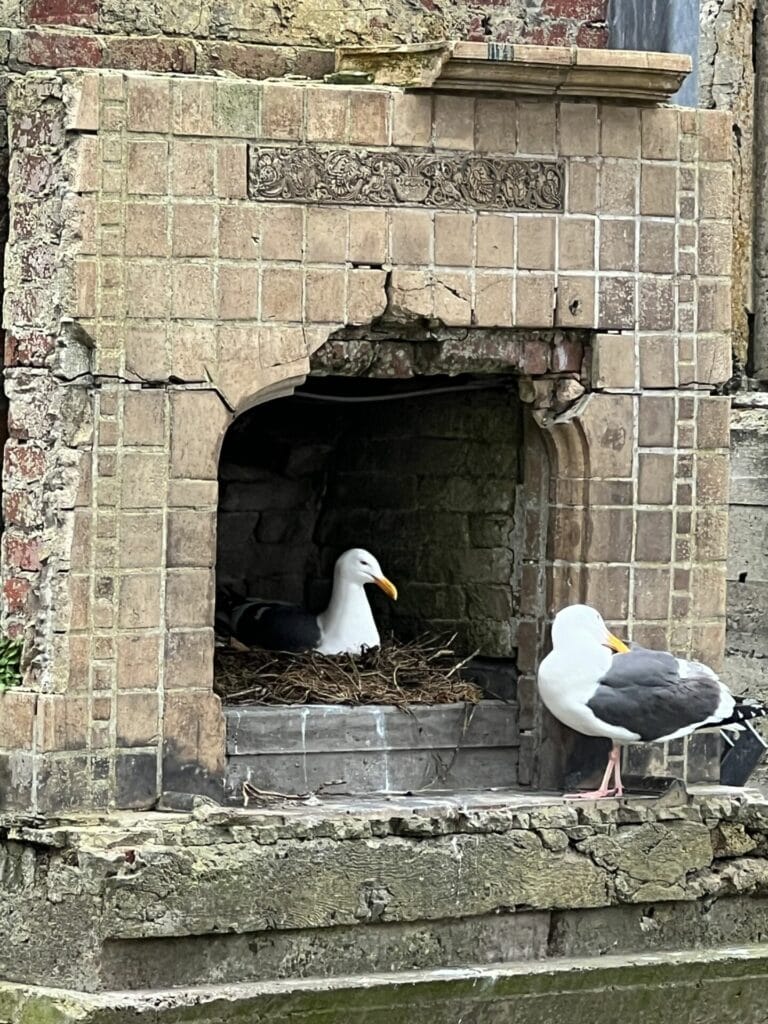
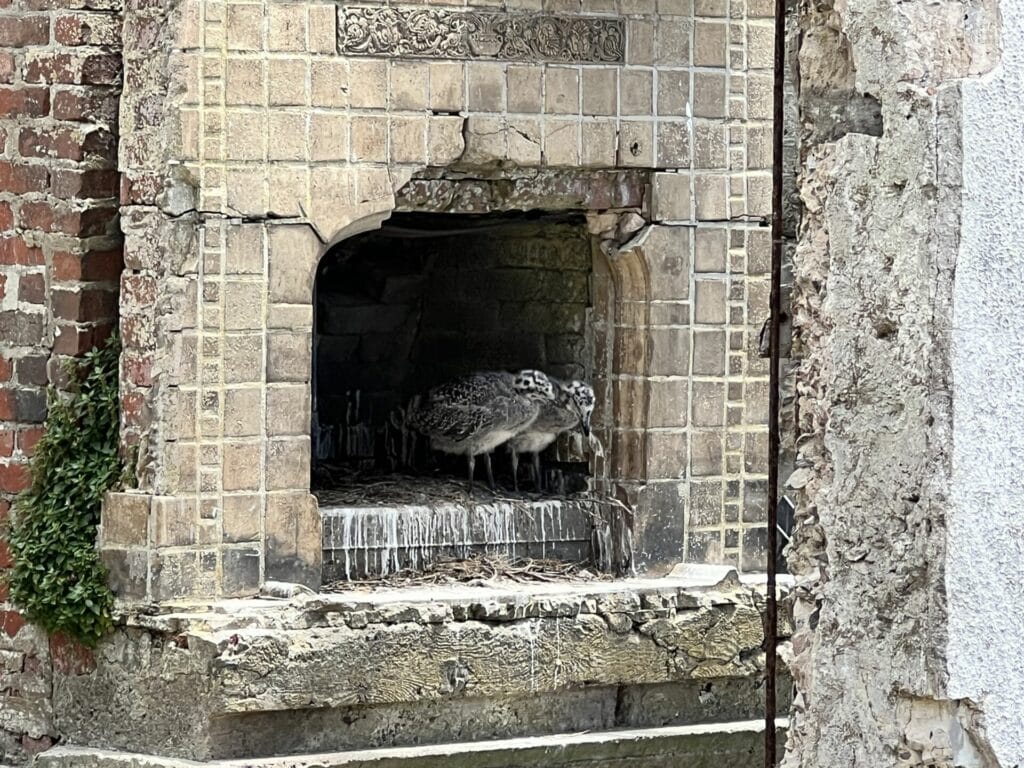
Also on the island’s windy west side, Snowy Egrets and Black-crowned Night Herons nest in the shrubs above the Parade Ground. And for the past few years, a pair of Peregrine Falcons have successfully nested and fledged chicks on top of the cell block (watch the webcam highlights here).

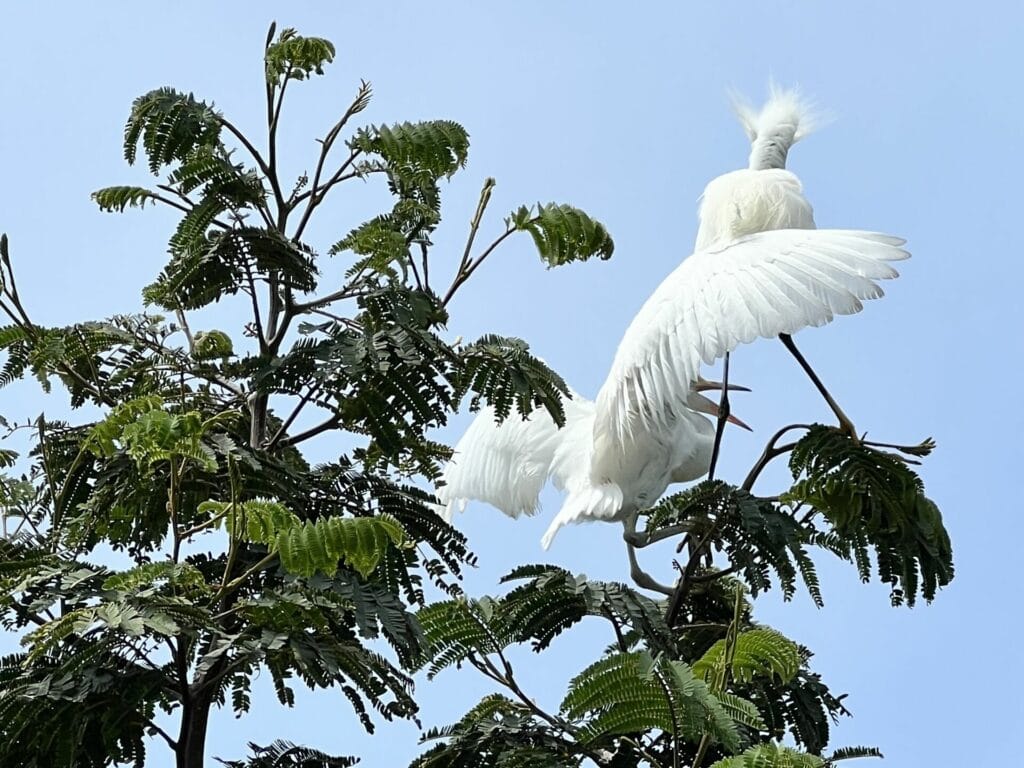
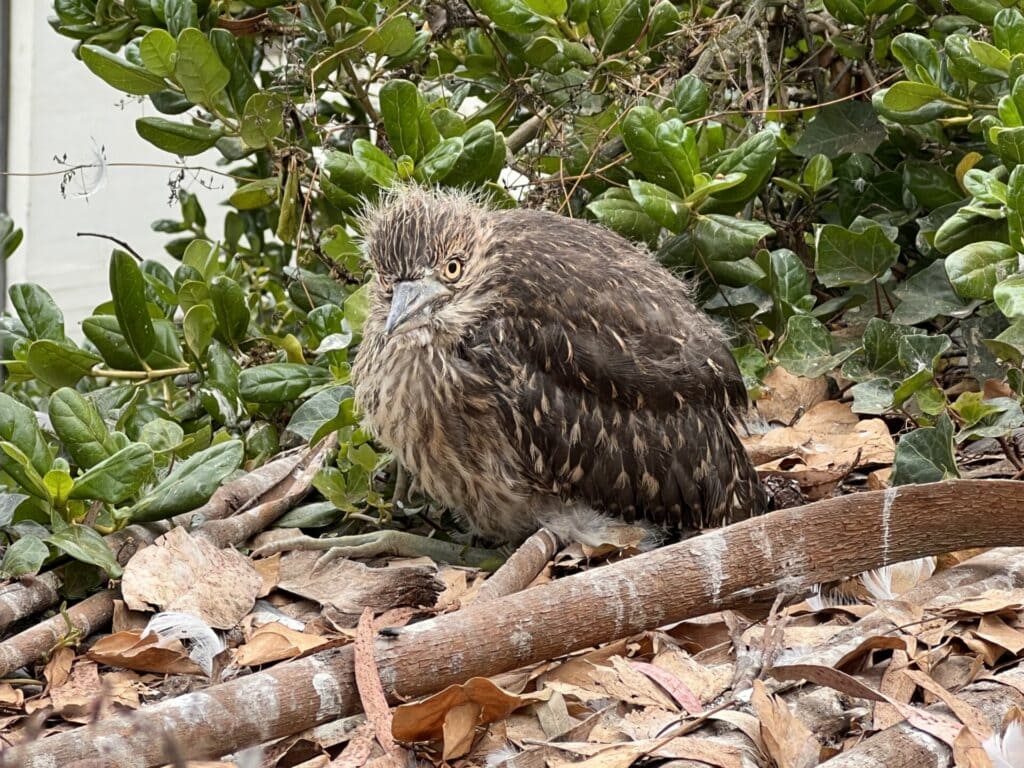
Pigeon Guillemots, with their striking red mouths and feet, like to nest in the nooks and crannies of the rocky shore near the ferry dock. We watched the adults swoop in and out from the rocks to get fish for their young. To supplement the natural habitat, nesting boxes have been built along the wall, visible from the roadway above. I learned from another volunteer birder that these birds usually fledge at night, so you’re unlikely to ever see the chicks themselves. There are few trees on the island, and several were lost to recent winter storms. Still, several pairs of Great Blue Herons nest in the large Eucalyptus tree along the main road that leads tourists to the cell block tour.

The nesting shore and water birds are not the only ones on the island. Alcatraz is a birding hotspot, and birders have documented as many different species on Alcatraz as on Angel Island, with its diverse habitats just over two miles away. But during spring and summer, the nesting birds and their growing chicks just dominate. This rugged landscape is theirs, to rear their next generation in relative peace and safety, oblivious to the cruel history of the island and the waves of tourists ferried over, twice an hour, 7 days a week. Many tourists, too, seem oblivious to the bird life and nature flourishing right in front of them.
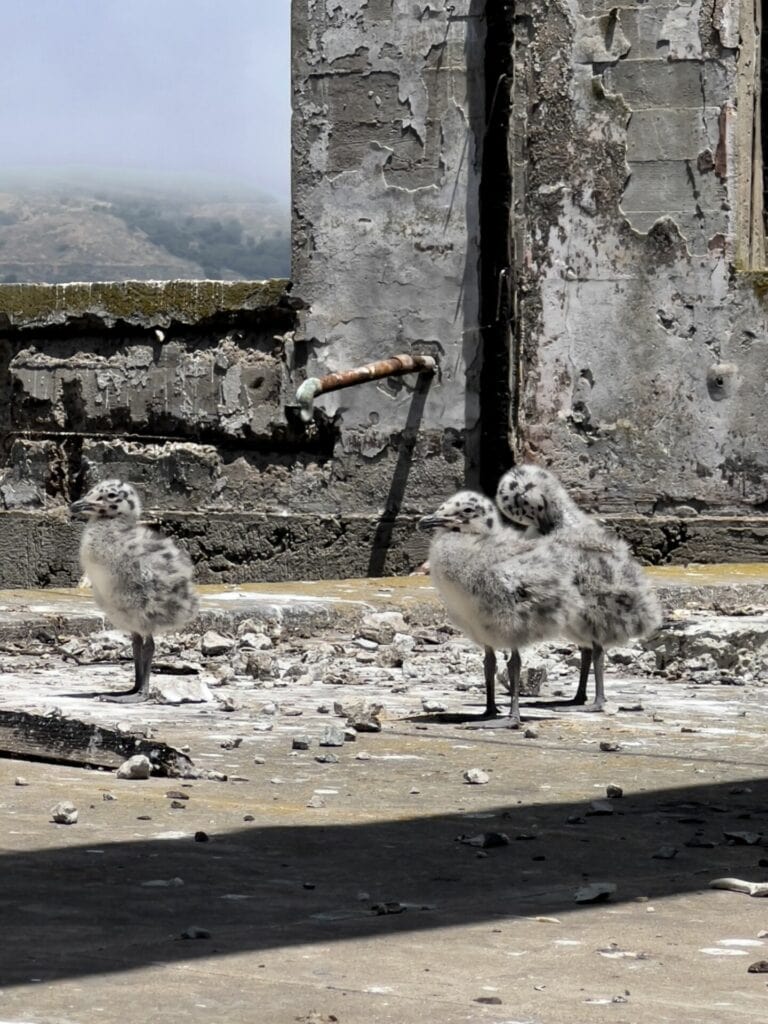
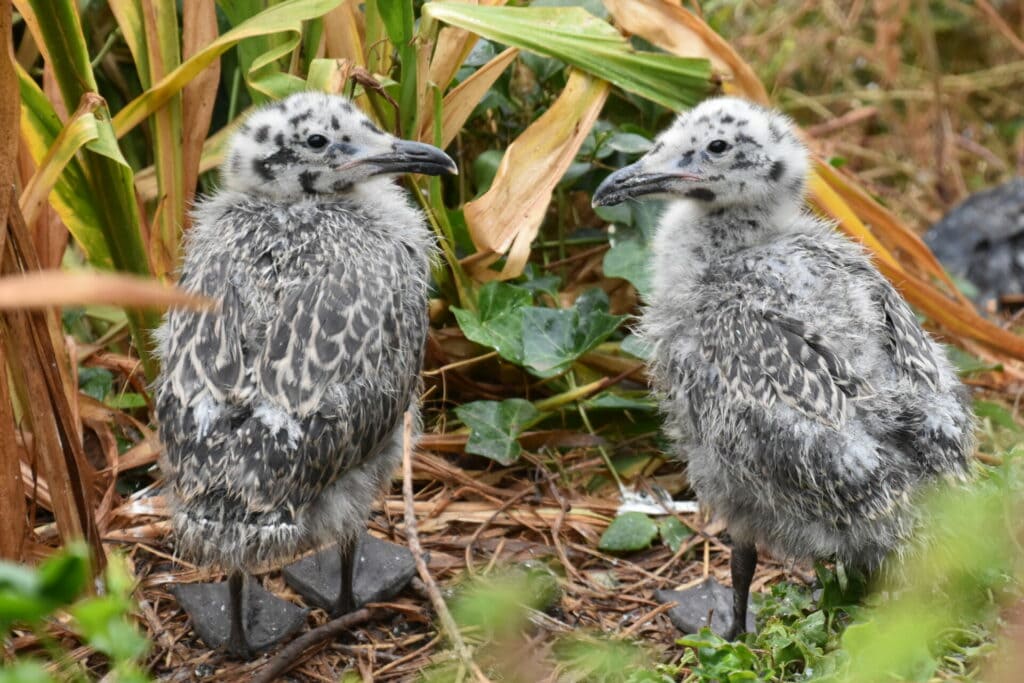
Helen J. Doyle is a California Naturalist and educator dedicated to the environment, public education, and equity and justice. A biologist by training, she shares her love of nature as a docent and writer. She volunteers with several Bay Area organizations, such as Año Nuevo State Park, the Gardens of Golden Gate Park, the Alcatraz Historic Gardens, and the Amah Mutsun Land Trust. Helen serves on the advisory council of Nature in the City, a San Francisco nonprofit that connects people to nature, and represents Nature in the City on the Reimagining San Francisco steering committee and the SF Crosstown Trails coalition. (Helen on LinkedIn)
